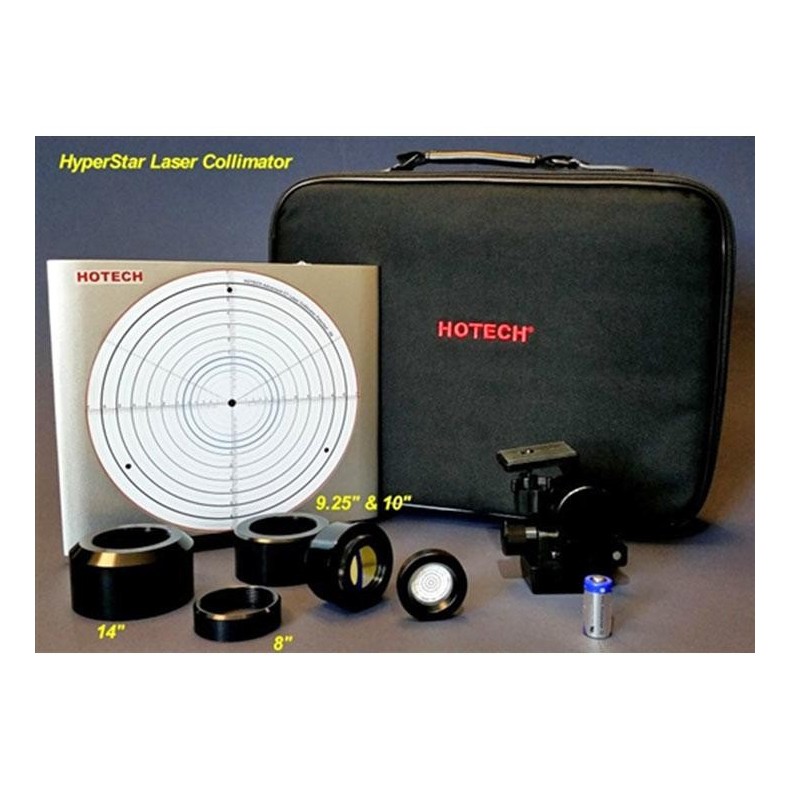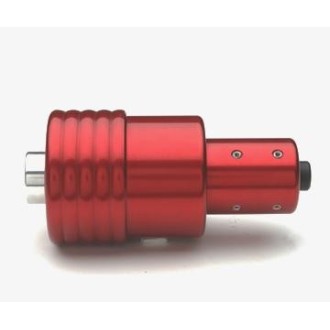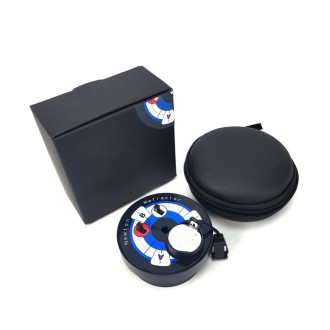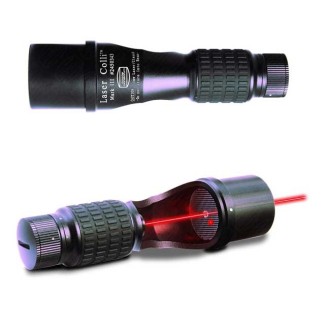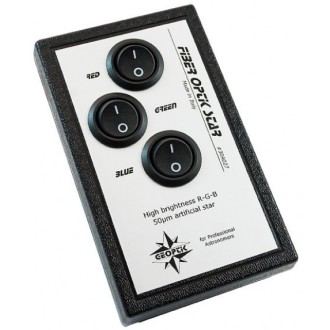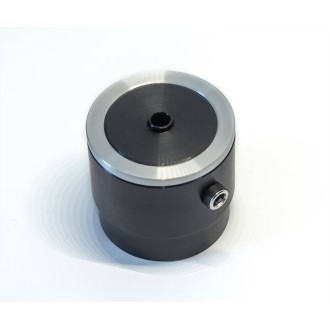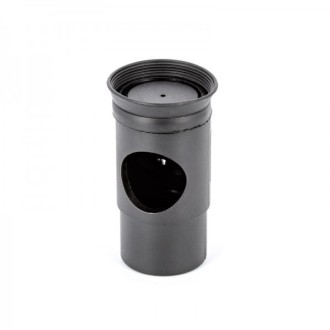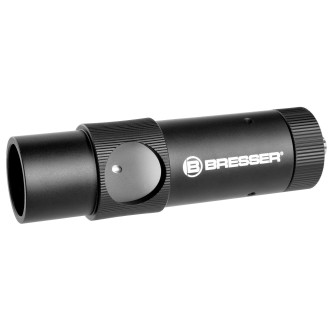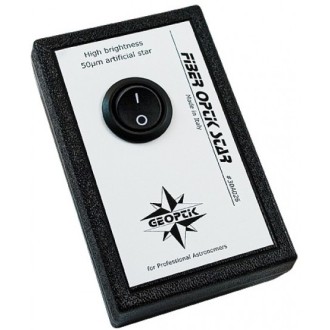Deliver it 14/21 days

Hyperstar Laser Collimator Hotech for 9.25" and 11" Hyperstar
The Hotech HLC-925 allows precise collimation of your 9.25" or 11" Hyperstar telescope at daytime without star.
| Carrier | Description | Estimated Delivery | ||
|---|---|---|---|---|
 |
Home delivery - International | Home delivery - International |
Tuesday, 13 May - Tuesday, 20 May |
|

Home delivery - International
Home delivery - International
Estimated delivery:
Tuesday, 13 May - Tuesday, 20 May
Accurate Collimation without using a Star}]In order to achieve an accurate star collimation, normally the amateur astronomer requires good seeing conditions with no cloud, no wind, stable temperature, no light pollution, a well-aligned telescope mount tracking system, telescope optical tube assembly (OTA) thermal equilibrium, and a good visible magnitude star. The visual quality of the referencing star is greatly affected by the prescribed factors most of which are all in Gods hand as you can see in the photo. Adjusting the collimation is guessing game where you move between front and the back of the telescope adjusting the corresponding alignment screw and holding your breath peeping through a high magnification eyepiece referencing the concentricity of the unstable defocused image. This can be an incredibly frustrating experience.
An artificial star can never simulate a real star because it is impossible to collimate with the telescope focus set at infinity. After artificial star collimation, you will need to adjust your focus back to infinity to view a real star by moving the primary mirror to a different focal position. The distance the primary mirror has been adjusted can accumulate mechanical tolerance errors. For some of the mass produced SCTs, the sticky baffle on the primary mirror focusing mechanism may also cause mirror-flop. If a mirror-flop has occurred, it will affect the alignment position which in turn will render the collimation useless. Ideally, It is best to collimate your optics at the same viewing focusing position without major optical displacements to correspond to the final view setting. The HyperStar Laser Collimator can accomplish this task without all the possible accumulated errors.
The HyperStar Laser Collimator does not require long distances to achieve high-accuracy collimation. Utilizing the installed flat mirror at the focal point (imaging sensor location), the collimator lasers double-passes the optical train and magnifies the alignment errors to a higher accuracy level. In addition, it also cuts the collimating distance in half achieving near-field alignment process. The collimator is stationed within your telescope's focal length directly in front of your telescope. Setting up for collimation, you will be standing between the telescope and the collimator aiming both the telescope and the collimator at each other. Then you will adjust the HyperStar collimation knobs to bring the returning lasers on the same track. This is a very convenient one-man-operation collimation task.
The HyperStar Laser Collimator identifies and assists the user to align the following parameters:
♦ Corrects the optical axial tilt between the HyperStar focal plane and the primary optical axis.
This process keeps the focal plane orthogonal to the primary optical axis so the captured image will be in-focus from corner to corner.
♦ Corrects the centering error between the HyperStar optical axis and the primary optical axis.
This process centers the focal point to the precise center of the imaging sensor for maximum collimated FOV capture.
The state-of-the-art advanced laser optical alignment technology used in the HyperStar Laser Collimator achieves the same rough alignment function of a costly large aperture interferometer commonly used in high-energy labs at a fraction of its cost.
The HyperStar Laser Collimator uses three collimated lasers, evenly spaced apart, to sample large aperture optical elements in your telescope. The three parallel laser beams completely simulate the light path (flat-wavefront) from a distant star and pass through the entire telescopes optical elements and reflect back to its target for a complete and accurate double-pass diagnostic reading of your telescope optical alignment. This innovative collimation technique and technology enables the amateur astronomer achieving far-field collimation as a near-field process.
This beautifully designed instrument is precision machined from a solid block of aero-space grade aluminum. It is then hardened and anodized to keep the entire mounted laser system thermally stable allowing you to achieve accurate collimation. The rigid, ultrathin profile and light-weight design makes the unit portable and simple to setup and use.
Specifications:
♦ suitable for all HyperStar 9.25" and 11" telescopes
♦ especially recommended if the HyperStar system is not permanently mounted (swappings between f/2 and f/10)
♦ perfect collimation without star, always optimal results independent from seeing
♦ no loss of valuabel observing time
♦ can be operated by one person
♦ complete scope of delivery in a sturdy transport case

